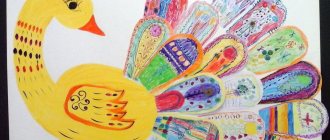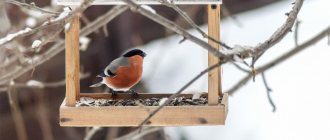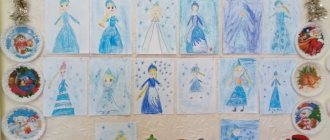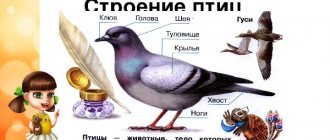How to carry out GCD on the surrounding world in a preparatory group?
Continuous educational activities should develop children's social, communication and speech skills, reveal their individuality, encourage them to learn, explore the region around them, and be interested in things that are important and interesting to them. Training should be carried out using the conversational method (lexical and speech therapy), answering children’s questions.
Book reading
Logically speaking, you need to develop the topic in a playful or practical form. Developing classification and logical thinking skills, generalizing knowledge about the object of the lesson, maintaining curiosity about the world around us are some of the main tasks of continuous educational activities.
“The world around us”: preschoolers, classes 6-7 years old
While studying the topic “The World Around us,” preschoolers always show interest in the world of living nature. For continuous educational activities on the world around them for children aged 6–7 years, it is necessary to choose topics that are directly related to the world that surrounds them, so that the children understand the objects of the lessons. Even in childhood, it is necessary to draw the child’s attention to environmental problems and point out ways to solve them, so that this knowledge will find a response in adulthood.
Important! The topics of the lessons should be fully disclosed and explained to children using simple phrases and sentences.
The topics below are some of the most common:
- seasons: their features, differences, ways of spending time, changes in nature and the animal world;
- living and inanimate nature: how to distinguish what features are inherent in each group, the connection between living and inanimate nature;
- weather and climate: climate classification, differences and characteristics of types, weather observation, ways of spending time during different weather phenomena;
- natural zones: differences and features of each natural zone, their connection with climate, weather, wildlife;
- healthy lifestyle: proper daily diet, healthy and unhealthy foods, exercise, exercise;
- travel: types of transport for travel, what to take with you on a trip, frequently visited resorts in the world, the North and South Poles;
- traffic rules: traffic lights, signs, traffic controllers, modes of transport, rules for driving a bicycle, scooter, etc.;
- the amazing animal and plant world of the seas and oceans: what oceans and seas are there on Earth, the most popular animals and plants of the seas and oceans;
- ecology: the consequences of improper waste management, how it can be corrected, separate waste collection, recycling, the formation of a desire to protect and preserve nature.
Note! The material must be accessible to children. The student must keep a separate notebook.
Dialogue with a student
Teaching methods and objectives of the lesson in the preparatory group on the topic “Living and inanimate nature”
The topic “Living and Inanimate Nature”, like no other, shows how close the relationship is between all processes and creatures in nature on Earth. Using this example, it is convenient to show children the impact of air, water, and soil pollution on the lives of not only animals and plants, but also people, and to achieve maximum understanding on their part. Planning and understanding by children of environmental problems and the desire to correct them in order to live on a clean planet is one of the main objectives of the lesson.
Drawing classes in senior groups of preschool educational institutions
Teaching methods
The result of the lesson will directly depend on the choice of teaching method, because getting children’s attention is not so easy. Some of the most commonly used teaching methods are the following:
- Riddles in verse. This can be either one or two quatrains with a missing word at the end that needs to be found using rhyme, or just a short riddle poem.
- Conversation with children. Developing the topic in the form of a conversation will help to better explain the material, provide the necessary clarifications and comprehensive explanations. We need the guys not to be afraid to ask questions and encourage them to do so.
Development of drawing skill
- A game. The gaming method helps develop a child’s interest in the topic being studied; through play, strong associative connections are created.
- Demonstration of cognitive character. This refers to a presentation displayed on a slide.
- Tasks for working with the team. Collective tasks not only bring children closer together, but also promote diverse solutions to issues, since each child has a different vision of the situation.
- Creative tasks. Creating various paper models, drawing with pencils and paints will help explain the topic better and encourage children to be creative.
Note! Focus on creative tasks, children love them very much.
Lesson objectives
A lesson on the topic “Living and Inanimate Nature” should interest the child as much as possible and awaken the curious researcher in him. Main objectives of the lesson:
- the ability to distinguish objects of inanimate and living nature from each other;
- repeating known information and obtaining new information on the topic of the lesson;
- developing an understanding of the inseparability of the concepts of inanimate and living nature;
- familiarizing the child with environmental issues and developing a caring attitude towards the environment;
- development of a child’s speech: reasoning of answers to questions, the ability to maintain a conversation with an expert even on an unfamiliar topic;
- awakening interest in the topic of the lesson and expanding the range of interest of the child;
- consolidation and application of knowledge through dialogue and group work.





